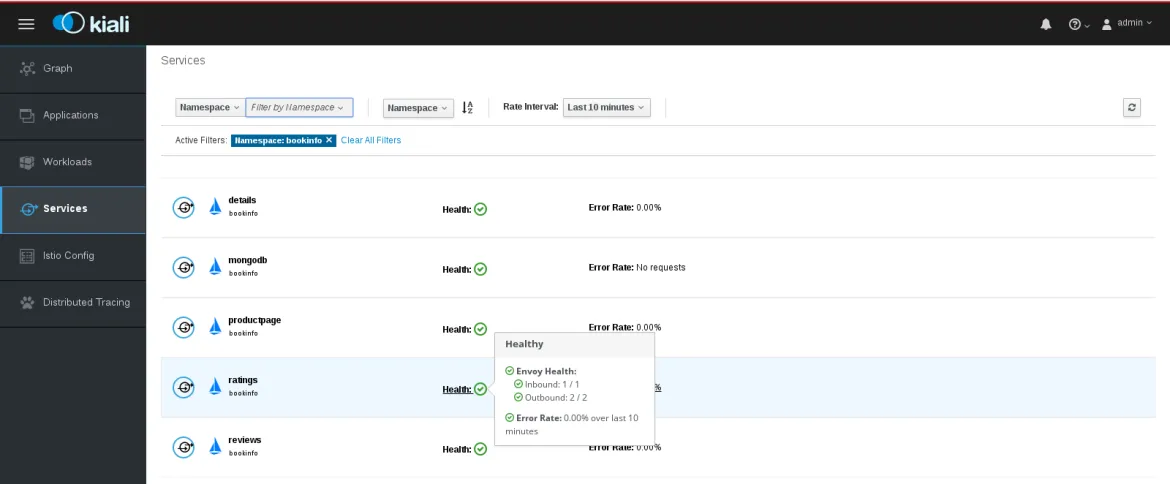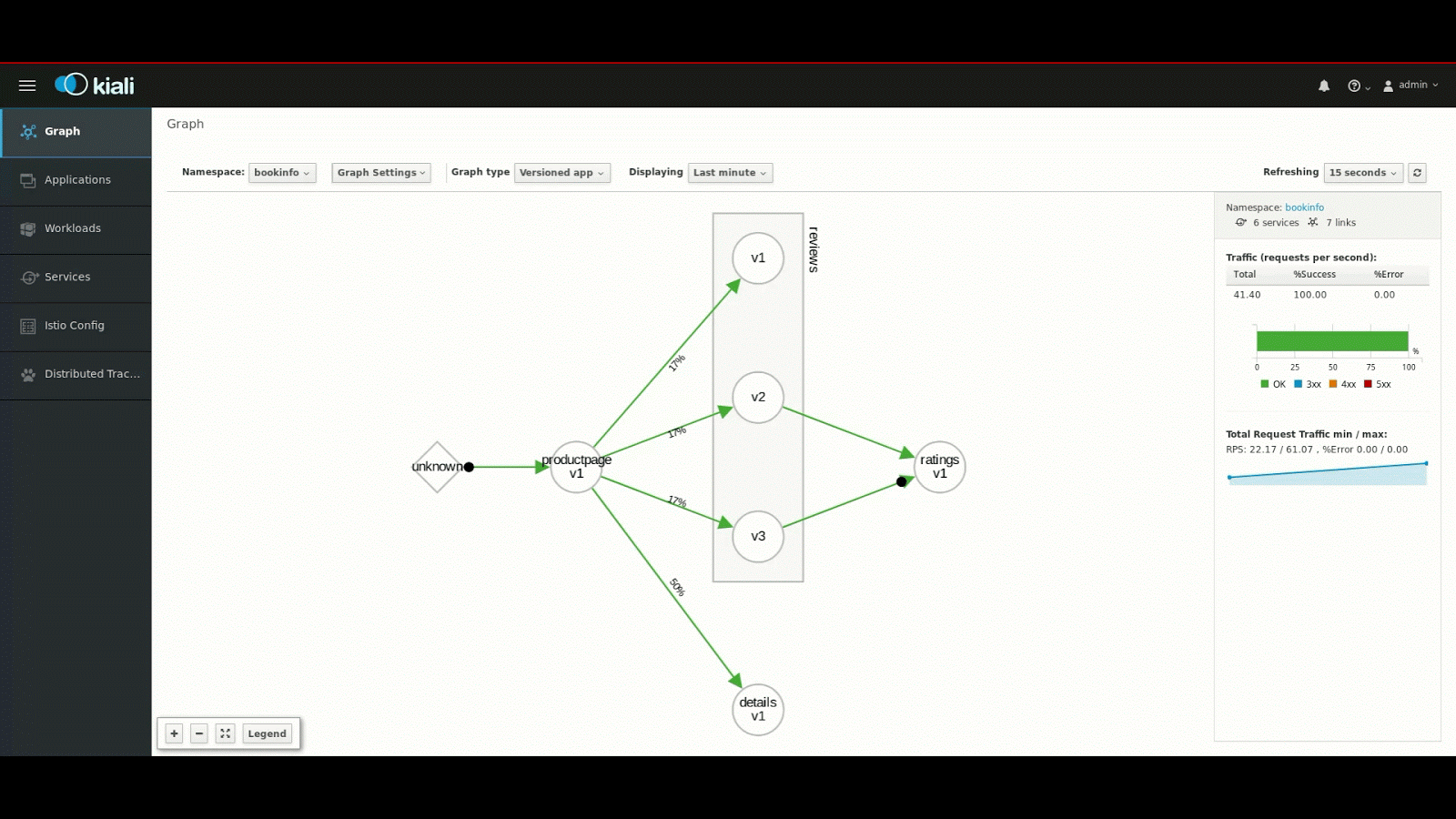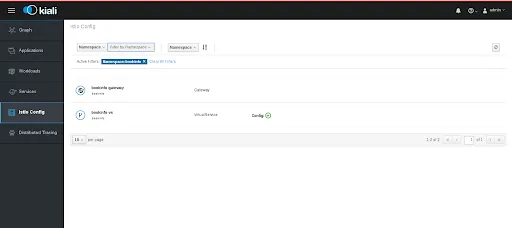It’s been a few weeks since the release of the first tech preview of Istio on OpenShift. Since then a lot has happened, and we are happy to announce the availability of our second tech preview release.
In this release we are adding a whole new user interface from the upstream Kiali project. The Kiali user interface can help Istio users understand what’s happening in their service mesh, canl show how the various components are connected, and can help to detect issues (HTTP 500, pod not started, misconfigurations) to better fix those.
Here are some of the core features of Kiali:
- Collect health information: Kiali will display the health of services and inter-service requests. For example, Kiali will aggregate health data from Kubernetes (Pod health) as well as from Istio Mixer (error rates below a threshold).

- Service mesh visualization: A graph displays how the various components of the mesh are related/connected. The service mesh graph offers many configuration options to customize the data displayed. One can choose how service versions are displayed, choose to display the number of requests over time, or the request’s time (how long the request took by average or percentiles) between two components.
An animated graph helps provide a more natural way to visualize both the inter-component request latency (speed of the dots) and the amount of traffic between two components (number of dots). An example service graph is shown below.

- Configuration validation (Configuration editing is planned for a future release): It can be error prone to write Istio configuration, Kiali can help finding out some common errors, in future releases, Kiali plans to complement Istio Galley.

A Kiali tutorial is available in the OpenShift Service Mesh installation guide. The guide will not only provide you with information on Kiali, but will also help you to install the whole Service Mesh suite, including Jaeger for distributed tracing and Grafana (for deeper metrics analysis), on an existing OpenShift 3.10 (or later) cluster.
Kiali is a project originally started by Red Hat engineers who are also contributing to Istio. Starting from the 1.1 release of Istio, Kiali is expected to become the default visualization console. Kiali is in a very active/rapid state of development, and the upstream community will be happy to get feedback and contributions.
Red Hat’s aim is to regularly release Tech Preview drops over the coming months. Stay tuned, and be sure to provide us with your feedback on OpenShift Service Mesh - we want to take your comments into account!
저자 소개
채널별 검색
오토메이션
기술, 팀, 인프라를 위한 IT 자동화 최신 동향
인공지능
고객이 어디서나 AI 워크로드를 실행할 수 있도록 지원하는 플랫폼 업데이트
오픈 하이브리드 클라우드
하이브리드 클라우드로 더욱 유연한 미래를 구축하는 방법을 알아보세요
보안
환경과 기술 전반에 걸쳐 리스크를 감소하는 방법에 대한 최신 정보
엣지 컴퓨팅
엣지에서의 운영을 단순화하는 플랫폼 업데이트
인프라
세계적으로 인정받은 기업용 Linux 플랫폼에 대한 최신 정보
애플리케이션
복잡한 애플리케이션에 대한 솔루션 더 보기
오리지널 쇼
엔터프라이즈 기술 분야의 제작자와 리더가 전하는 흥미로운 스토리
제품
- Red Hat Enterprise Linux
- Red Hat OpenShift Enterprise
- Red Hat Ansible Automation Platform
- 클라우드 서비스
- 모든 제품 보기
툴
체험, 구매 & 영업
커뮤니케이션
Red Hat 소개
Red Hat은 Linux, 클라우드, 컨테이너, 쿠버네티스 등을 포함한 글로벌 엔터프라이즈 오픈소스 솔루션 공급업체입니다. Red Hat은 코어 데이터센터에서 네트워크 엣지에 이르기까지 다양한 플랫폼과 환경에서 기업의 업무 편의성을 높여 주는 강화된 기능의 솔루션을 제공합니다.

